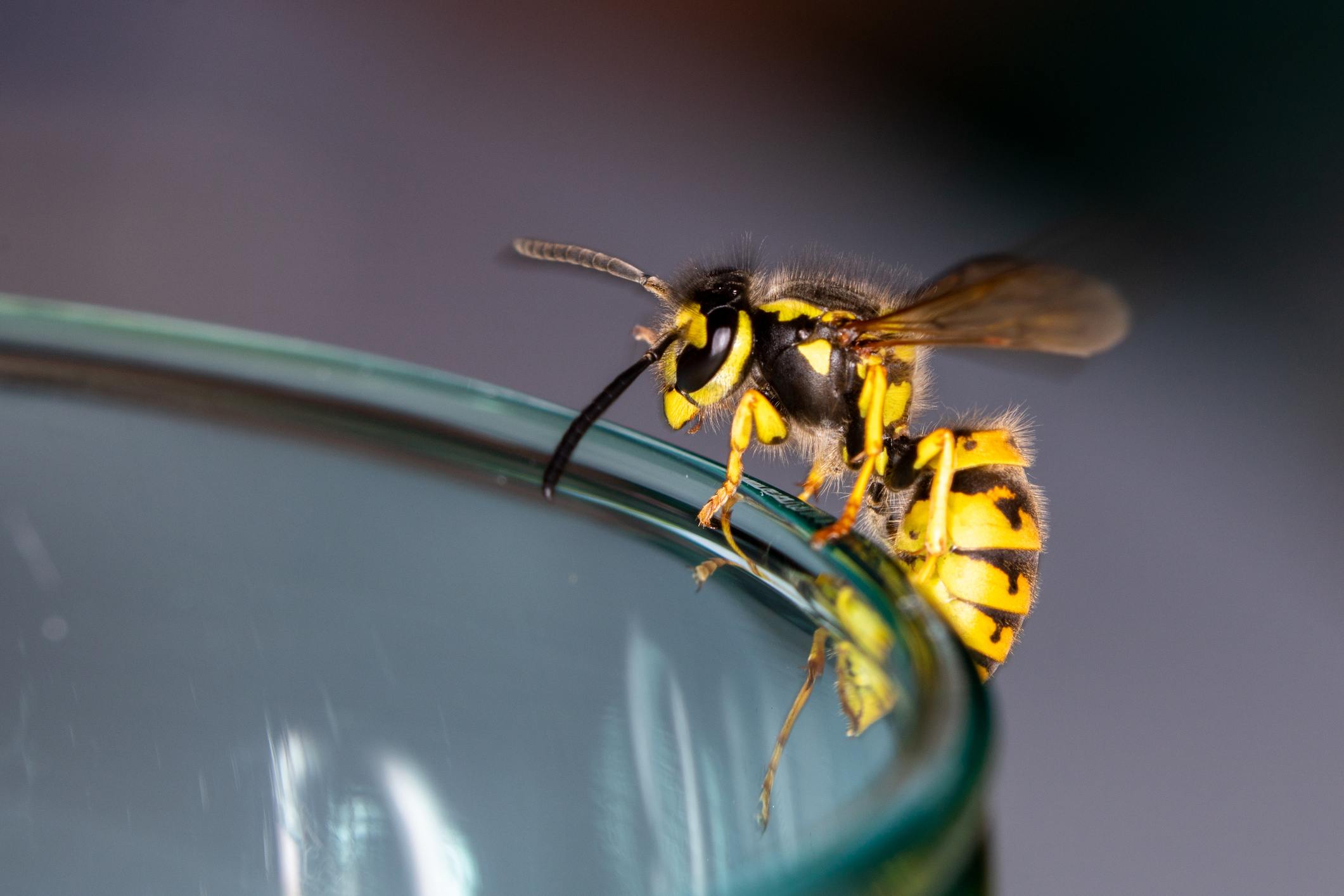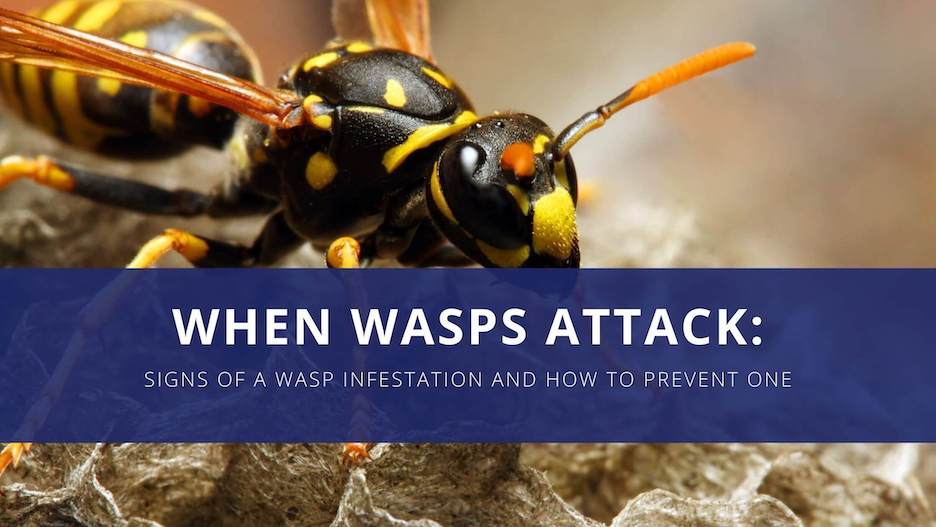Wasps & Hornetsdeveloper2022-11-15T12:52:36-05:00
Wasps & Hornets
WASPS & HORNETS
Color: Varies by species.
Characteristics: Unlike honey bees, wasps and hornets do not have fur. They have shiny bodies.
Size: Varies by species, but generally range from 5/8 of an inch to 1 inch long.
Potentially Dangerous: Yes, wasps and hornets are more aggressive than bees when provoked.
WHAT ARE WASPS AND HORNETS?
Wasps and hornets belong to the family Hymenoptera and are just a few of the stinging insects you can expect to come across throughout Wisconsin from mid-summer to early fall.
Paper Wasps – Measuring from 3/4 to 1 inch long, paper wasps can be many different colors depending on the species; including black, yellow, orange, and brown with grayish colored wings. They look long-legged and possess a lance-like stinger that gives them the opportunity to repeatedly sting their victim.
Yellowjackets – Measuring between 3/8 to 3/4 inch long, yellowjackets have banded yellow and black abdomens, or white and black abdomens, depending on the species. They have shorter legs and wider abdomens than paper wasps but possess a similar stinger.
Bald-Faced Hornets – Despite their name, bald-faced hornets are actually a type of wasp and they measure 5/8 to 7/8 inch in length and are usually black with a white pattern on their face and white stripes on their thorax. Their stinger is similar to that of the paper wasp and the yellow jacket.
WHY DO I HAVE WASPS & HORNETS?
Wasps and hornets are most likely on your property looking for a food source or nesting area. They build their nests in trees, shrubs, sheds, attics, under decks, and in the eaves of a building. The queen will emerge after the winter months and look for areas to nest in. Depending on the species, they will eat pollen, nectar and other insects. The queen will also look for an area with a water source such as a pond, birdbath or pools.
HOW DANGEROUS ARE WASPS & HORNETS?
Most stinging insects will not sting you unless they feel physically threatened, or you venture too close to their nest, however some species have been known to sting even when not threatened. Every year in the US, more than 40 deaths are caused by bee, yellow jacket, wasp, or hornet stings due to allergic reactions. It is also believed that 10 out of every 100 adults has some kind of large and localized reaction to a sting. You may also not know you have an allergy to these insects until you get a multitude of stings, which may cause serious swelling, redness, pain, and eventually shock.
HOW DO I GET RID OF WASPS & HORNETS?
Contacting a pest control professional in Wisconsin is the best way to get rid of wasp and hornets. Pest control professionals have the tools and the knowledge about these pests to make sure that they are removed from your property safely and without harm to you or your family. Our Home Protection Plan can help you keep wasps and hornets away from your home or business in Wisconsin.
CAN I REMOVE WASP & HORNET NESTS BY MYSELF?
No. Getting rid of wasps and hornets is not a task you should handle on your own. There are some DIY methods and products that you can buy at your local hardware store, but these are often ineffective and if they are handled or applied incorrectly, they can be extremely dangerous to your health and may have no effect on the stinging insects you are trying to get rid of. The best and safest way to get rid of stinging insects from your home or business is by contacting the professionals at Wil-Kil Pest Control in Eau Claire, Menomonee Falls, Appleton or Milwaukee.
HOW SOON CAN WE GET THERE?
It is our goal at Wil-Kil Pest Control to assist you with your pest problem as quickly as possible. Our team wants to make sure that your wasp and hornet problem is taken care of swiftly and safely and because of that, we will make every effort to be on your property to take care of your problem as soon as possible.
CONTACT WIL-KIL FOR WASP & HORNET NEST REMOVAL
Unfortunately, there is very little you can do to avoid stinging insects building their nests on your property. You can keep a look-out for signs of nests in the places they like to build, like under eaves and decking, but there is nothing you can do to be sure they won’t build there. As soon as you become aware of a stinging insect nest, the best thing you can do is contact us for immediate assistance in removal.
Related Post From Our Blog
developer2023-02-08T11:37:54-05:00December 29th, 2022|0 Comments
Spotting a wasp around your home can be alarming, especially during the winter season. Running across a wasp can also be an indication of more in the area. Some wasps survive the colder months by [...]
developer2022-06-10T13:19:05-05:00August 11th, 2021|0 Comments
Wasps are among the most intimidating stinging insects to encounter. While many bees can only sting you once, wasps can sting multiple times. Stings are painful, and can even trigger an allergic reaction. When you [...]
developer2020-06-18T13:18:58-05:00June 10th, 2020|0 Comments
For many of us, the outdoors has become an escape from day-to-day life as we try to find a new normal with COVID-19. Warm weather combined with the need for social distancing also means that [...]






